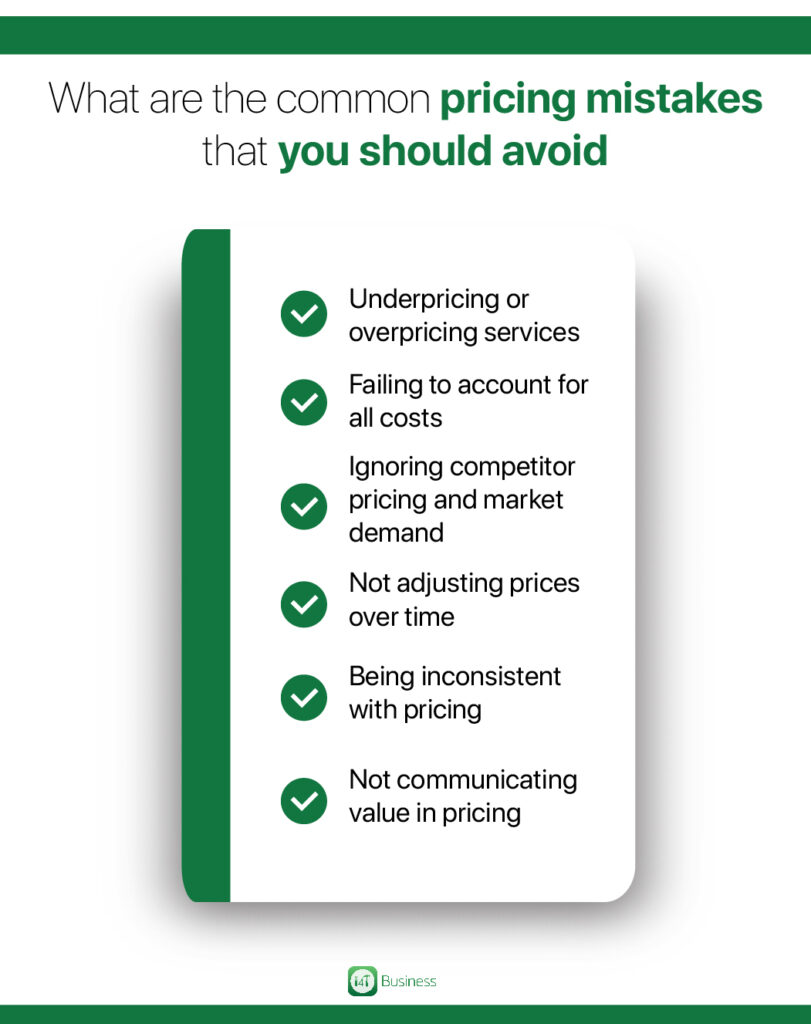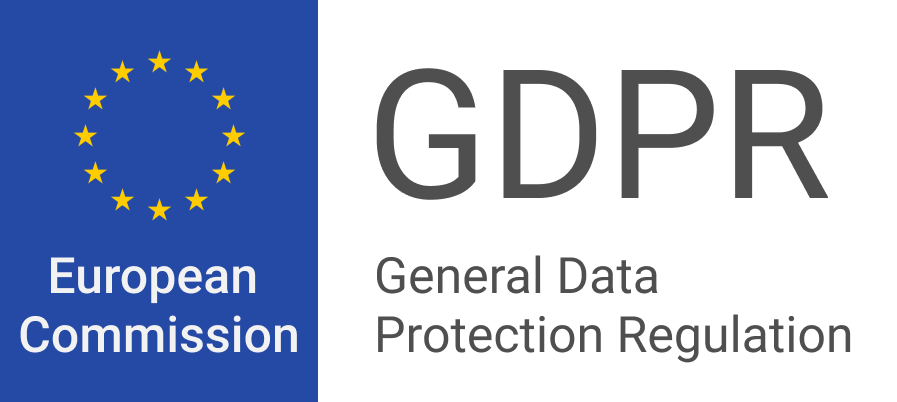As you already know, setting the right price for your services can be one of the most challenging things you will face when running a small business. If you set the prices too high, you might scare off potential customers; meanwhile, if prices are too low, you could struggle to cover costs.
That’s why you should find that sweet spot that keeps your rates competitive, covers the costs, and still makes a profit. This becomes more challenging due to changing market demands, rising expenses, and customer expectations.
You need a clear pricing strategy to tackle these challenges well. In the meantime, using tools like field service management software for small businesses can make the process smoother and help set fair, reliable prices. In this article, we will give you a brief overview of the essentials that can make or break your pricing strategy.
Understanding the basics of service pricing
When pricing your services, you can’t just pick a random number that sounds right. You need a solid mechanism and good pricing strategies to do this more effectively. Unlike pricing a product, which often has a tangible cost to work from, service pricing is more abstract.
When pricing a product, you typically start with the cost of materials, production, and any related expenses, then add a markup for profit. With services, it’s a bit different. You’re not just charging for something physical; you’re pricing your time, expertise, and the unique value you bring to each job.
When pricing your services, you need to account for more intangible factors, like your skill level, industry demand, and the time invested in each task.
For example, an hour of a plumber’s time is priced differently than an hour of consulting work, even though both are services. As a small business owner, understanding this distinction is key. This is because services rely heavily on perceived value, meaning the quality of your work and the experience you provide. They will directly affect the amount that you can charge for your services.
What are the factors you should consider when setting prices
As we said earlier, you need to find that sweet spot when setting the price for your services. You want to attract customers, cover your costs, and still make a decent profit. But where do you start?
By understanding a few key factors, you can create a solid pricing strategy that works for your business. Let’s dive into each of these factors to help you find the ideal spot for pricing your services.
Market research
Before you decide on prices, it’s smart to see what others in your industry are charging. Doing a bit of research helps you understand where your service fits in the market.
For this purpose, you can check out similar businesses in your area and see what their prices are and which services they offer. You don’t always need to match the lowest price, but understanding the general range can help you find the right spot for your service. It also gives you a solid starting point to set fair and competitive prices.
Value proposition
Your value proposition is what makes your business special. Think about what you do best; maybe it’s quick response times, high-quality work, or a unique skill.
When you know what sets you apart, you can charge based on the extra value you bring to the table. If your service offers something that others don’t, customers are often willing to pay a bit more. Make sure your customers know what makes your service unique, as this can make a big difference in how they view your prices.
Target audience
It’s important to understand who your customers are and what they’re willing to pay. Think about what your customers want and what they’re ready to spend. If you’re targeting budget-conscious clients, they might be looking for affordable options that still offer good value.
If you’re going for a more premium crowd, they may expect higher prices in exchange for special features or extra attention from your side. By knowing your customers’ budgets and expectations, you can set prices that feel fair and appealing to them.
What are the suitable pricing models for small service-based businesses
A pricing model is simply the way you charge for your services, whether it’s by the hour, per project, or through ongoing fees. The model you choose can make a big difference in attracting clients and maintaining a steady income.
Let’s explore some of the popular pricing models to help you find the one that best fits your business and clients.
Hourly rate
Charging by the hour can be a straightforward way to ensure you’re paid for the exact time spent on a job. This approach works well for jobs where the time can vary, like consulting and repair services.
However, some clients may hesitate to go for this option since it is harder to predict the final cost and determine how long it will take to complete the job.
Project-based pricing
Project-based pricing is ideal for defined jobs with clear deliverables, like completing a renovation or building a structure. Under this model, you get to price the entire project based on the total time, materials, and expertise required.
To calculate project-based pricing, you should start by estimating the time needed and any materials or resources required. Consider any risks or possible delays and add a buffer to cover unexpected issues. Project-based pricing often gives clients a sense of security, as they know the cost upfront, and it gives you control over the overall project scope.
Retainer agreements: Ideal for long-term clients and recurring services
Retainer agreements are perfect for clients who need ongoing support, such as regular maintenance or inspections. With a retainer, your client pays a set amount regularly (often monthly) for a certain amount of work or hours.
This model provides predictable income and can build strong, long-term relationships with clients. It’s also helpful for clients who want ongoing support without signing new contracts for each project. When setting up a retainer, make sure to be clear about what you include in the package.
Subscription models: Useful for services that benefit from repeat customers
Subscription models work well for services that are ongoing or benefit from regular use, like cleaning services. In a subscription model, clients pay a recurring fee (weekly, monthly, or annually) to get access to a service.
This approach can provide steady income and make budgeting easier for your clients. Subscriptions are great for services where regular check-ins or ongoing access add value, as they allow clients to maintain a steady service relationship with you. Just be sure to deliver consistent quality and value, as clients may cancel if they don’t feel they’re getting enough for their investment.
Step-by-step guide to calculating service prices
When setting your prices, you can’t just pick a random number. You must do a bit of maths to ensure you’re covering all your costs and earning a profit. This step-by-step guide walks you through calculating service prices, from understanding your costs to double-checking with a price calculator.
Let’s dive in to make sure your prices are spot-on, sustainable, and aligned with your business goals.
Step 1: Calculate your costs (both fixed and variable)
Start by listing all the costs involved in providing your service, including fixed costs like rent, insurance, and software subscriptions. These expenses stay the same no matter how much work you do. Then, add your variable costs, which change with each job, like materials, travel costs, and any labour costs.
Knowing your total costs gives you a solid foundation to set your prices. It ensures you’re covering everything it takes to run your business while delivering quality service. This step is essential, as pricing without knowing your costs could lead to losses or thin profit margins.
Step 2: Determine your desired profit margin
Once you’ve calculated your costs, it’s time to decide on your profit margin. In simple terms, this is the amount you’d like to earn on top of your costs. For example, if you want a 20% profit margin, you’ll add 20% to your cost as profit.
Profit margins can vary depending on the industry and type of service you offer. Therefore, make sure to consider what feels reasonable while keeping your business goals in mind. This margin lets you reinvest in your business, cover unexpected expenses, and grow your business over time.
Step 3: Factor in taxes and other additional costs
Don’t forget to include taxes and any other fees that apply to your service. Depending on your location, you may need to add sales tax or VAT to your pricing, as well as other expenses like transaction fees for payment processing.
It’s best to calculate these costs upfront so they’re not cutting into your profits later. By factoring them in, you ensure your final price fully covers all expenses, making it easier to maintain a healthy profit.
Step 4: Review pricing using a price calculator to ensure accuracy
Finally, use a price calculator to double-check your figures. A calculator can be especially helpful for complex services with multiple cost factors, ensuring you don’t overlook any details. There are many online tools like i4T Business Price Calculator and field service management software for small businesses that allow you to get a clear picture of what you should charge.
Efficiency driven by mobile access in the field helps you complete jobs quickly and more accurately, which will directly increase your profit margins.
What are the different pricing strategies you can use to stay competitive
In today’s competitive market, you should follow a good pricing strategy to stay ahead of the competition. There are some thoughtful strategies like value-based pricing, smart discounts, and psychological techniques that can help your business attract and retain customers.
Let’s explore these strategies one by one to ensure your pricing not only covers costs but also boosts your appeal in the industry.
Value-based pricing
This strategy is all about understanding the unique value you bring to your clients. If you offer expertise, quality, or convenience that your competitors don’t, customers may be willing to pay more. For example, if your service saves clients time or provides a specialised skill, that added value can justify you charging a higher price.
To use value-based pricing effectively, talk to your customers and understand what they find valuable about your service. Highlighting these unique benefits can help customers see why your pricing is fair, even if it’s higher than a competitor’s. This approach can also build trust, as customers feel they’re paying for quality and personalised service.
Discounts and promotions
Offering discounts and promotions can be a great way to attract new clients, reward loyal ones, or boost sales during slower periods. However, it’s essential to plan discounts carefully so they don’t cut into your profits too much.
Consider running promotions during certain seasons, for first-time clients, or referrals. On the other hand, limited-time offers can create urgency and encourage customers to hire your services rather than later.
When setting up discounts, make sure the reduced price still covers your costs. Avoid giving discounts too often, as this can make clients expect lower prices all the time. Instead, focus on offering value-added discounts, like bundling services or offering a discount on a future booking, which encourages repeat business and improves loyalty.
Psychological pricing techniques
Psychological pricing is all about how numbers affect clients’ perceptions. You can use techniques like “charm pricing” and quote prices that end in 9, like $99 instead of $100. It can make your price seem smaller and more appealing, even though the difference is minimal.
Another technique is setting prices slightly below a round number (e.g.: $40.95 instead of $50), which can create the impression of a more competitive price. These small adjustments might seem minor, but they can make a significant impact on how customers perceive your service’s value.
Just remember to use these techniques thoughtfully, as they work best when they align with your overall pricing strategy and the image you want to convey.
Should you regularly review and adjust the prices?
It can be tempting to keep your prices steady for a long period. However, you should review it regularly to make sure that you stay profitable. Costs like materials, labour, and even overhead expenses can change over time, which can directly affect your profit margins.
By monitoring these costs periodically, you can make small adjustments to your prices as needed rather than making a larger, sudden increase that might surprise your customers.
Set a routine—whether it’s quarterly or annually—to check in on your costs and see if your current pricing still works. Small, proactive adjustments are often easier for clients to accept than a big increase after years of unchanged prices.
Adjusting prices in line with your expenses not only helps maintain your profitability but also ensures that you stay competitive in the industry.
How to communicate price changes with existing clients effectively
If you need to raise prices, communication is key. Clients appreciate transparency, so be upfront and explain why the change is happening. Let them know about rising costs or improvements you’re making to deliver better value. A simple email or message with a respectful tone can go a long way in maintaining trust.
Consider giving loyal clients a heads-up before implementing the change, and, if possible, offer a grace period or a discount on their next service. It helps to show your appreciation for their business and gives them time to adjust.
You can smoothly implement price changes without frustrating your clients if you are transparent and upfront about them.
What are the common pricing mistakes that you should avoid?

When pricing your services, you should avoid some of the common mistakes that can impact your profits and client relationships. Here are some of the most frequent pricing pitfalls small business owners encounter and how to steer clear of them. By understanding these, you can create a pricing strategy that’s consistent, competitive, and sustainable.
- Underpricing or overpricing services: Setting your prices too low might attract clients, but it often means you’re not covering all your costs or making a decent profit. Overpricing, on the other hand, can scare away potential clients who don’t see enough value to justify the higher cost. Therefore, you should aim for a balance that reflects the value you provide while staying within what clients are willing to pay.
- Failing to account for all costs: It’s easy to forget certain expenses—like travel, materials, or certain overhead costs. If you’re not including every cost in your pricing, your profit will take a hit. Make a list of both fixed and variable costs to ensure you are covering everything in your rates.
- Ignoring competitor pricing and market demand: If your rates are far from the market average, clients may choose competitors or feel they’re overpaying. Therefore, you should regularly check competitor prices and adjust based on demand to stay competitive in the industry.
- Not adjusting prices over time: Costs can change with rising inflation or changes in market demand. If you keep prices the same for too long, you could lose profit over time. Review your prices periodically to ensure they still make sense for your business and the market.
- Being inconsistent with pricing: Offering different prices to different clients without a clear reason can confuse your clients and damage your reputation. Consistency is key; it builds trust and sets clear client expectations. If you offer discounts, make sure they’re part of a clear, strategic plan rather than random reductions.
- Not communicating value in pricing: If clients don’t understand the unique benefits they’re getting, they may question your rates. Make sure your pricing reflects the value of your expertise, quality, or other advantages your service offers, and communicate this to clients.
Why should you use modern tools for accurate pricing
It can be challenging to quote a price for the services that you offer. However, if you use the right tools, you can make this process much easier and more accurate.
Tools like profit margin calculators and field service management software for small businesses take the guesswork out of the pricing process. They help you calculate costs, set profit margins, and determine final prices with confidence. The key point here is that some of the tools, including the i4T Business Price Calculator, are free, which is ideal for small businesses with a tight budget.
Benefits of using a price calculator
- Ensures profitability: A price calculator and field service management software for small businesses help you add up all costs—including materials, labour, and overhead. Therefore, you can set a price that covers expenses and still leaves room for profit. This way, you know you’re charging enough to keep your business sustainable.
- Avoids underpricing: By giving you a clear view of your total costs, a price calculator makes sure you’re not setting prices too low. Underpricing can hurt your profit margins and can burn you out if you’re working more but earning less.
- Saves time on calculations: Instead of manually crunching numbers for each job, a calculator lets you enter the numbers once and get an accurate price quickly. This frees up time to focus on other areas of your business.
- Adds consistency to pricing: Using a calculator ensures that your pricing stays consistent across all services and clients, which builds trust and avoids confusion. Clients appreciate clear and predictable pricing, making them more likely to choose you again.
- Adjusts easily for market changes: If material or labour costs increase, it’s easy to update the calculator with the new numbers, and it will adjust your pricing accordingly. This helps you stay profitable as costs change over time.
- Reduces the risk of human error: Manually calculating prices can lead to mistakes, especially when handling multiple cost factors. Price calculators minimise the risk of errors, giving you more accurate and reliable prices.
Wrapping up
As you can see, setting the right price is not just picking a random number. It’s a strategy that affects every part of your business. A good pricing strategy will ensure that you’re covering costs, earning a profit, and staying competitive in your market.
By understanding your expenses, market trends, and the unique value you bring, you can set prices that support your business’s long-term success. Effective pricing isn’t just about today’s sale—it’s about building a sustainable future.
For small business owners, you don’t have to figure out your prices alone. From market research to pricing calculators and field service management software for small businesses, there are plenty of resources that can simplify the process and help you set accurate prices.
By using these tools and strategies, you can confidently set prices that are competitive and fair, which gives your business a solid foundation to grow. Remember, a well-thought-out pricing strategy not only benefits you but also builds trust with your customers.
You can use field service management software for small businesses to simplify your pricing process. i4T Business automates most of the administrative tasks which will help you to minimise your cost and set a solid price. Reach out to our team to try our free trial today. Our software will take your business and pricing strategy to the next level.
FAQs
Start with your costs, add a profit margin, and consider market rates to find a competitive starting price.
Review prices at least annually or more frequently if costs or market demand change significantly. You can also use field service management software for small businesses to keep track of your costs easily.
Aim for a profit margin of 15-30%, depending on industry standards and business needs.
You can, but keep it consistent and clear—like offering loyalty discounts for returning clients.
Adjust prices based on high or low demand periods to maximise profit and manage workload.
Hot off the press!











